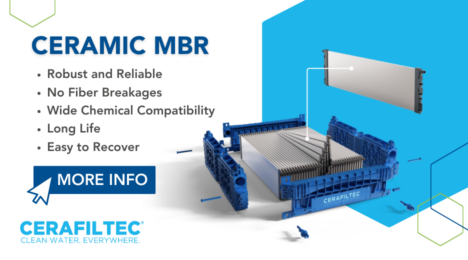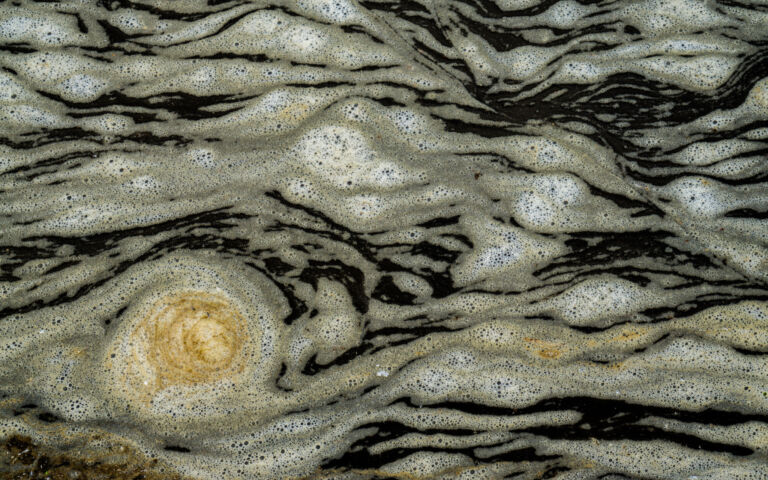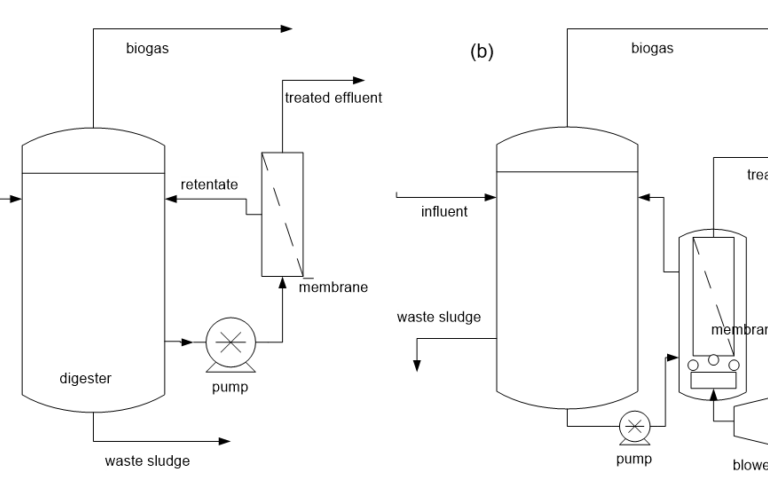IMSTEC 2020: Bushfires, coronavirus and, of course, membranes
Simon Judd and Claire Judd, Judd Water & Wastewater Consultants
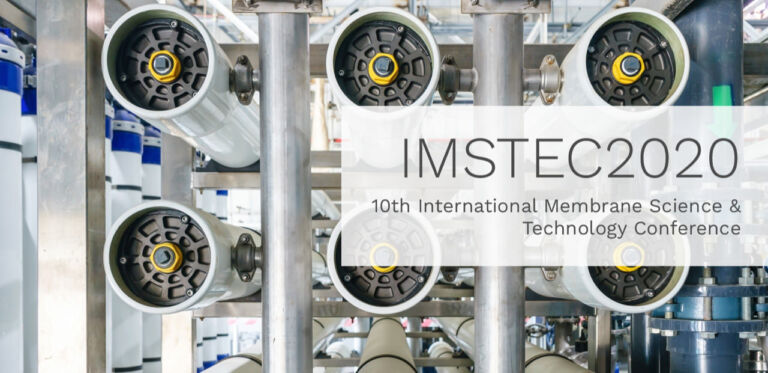
1. Report on the 10th International Membrane Science & Technology Conference
The University of Technology in the wonderful city of Sydney, Australia was the venue for the 10th IMSTEC (International Membrane Science & Technology Conference) from 2–6 February 2020. Despite the very real challenges of bushfires and the coronavirus, the organisers – Pierre Le-Clech (University of New South Wales) and Hokyong Shon and Duc Long Nghiem (both of the University of Technology, Sydney), together with their teams of supporting committees and volunteers – delivered a stimulating and well-organised event on behalf of the Membrane Society of Australasia.
The IMSTEC conference itself encompasses all aspects of membrane science and technology, with delegates given the choice of four simultaneous streams. Within this very broad scope, there were two dedicated MBR sessions, plus a few other presentations on the subject dotted around the programme.
2. Focus on MBRs
Topics covered in the two MBR sessions included:
- real-time optical analysis of cake layer build-up
- fouling suppression by (i) quorum quenching (in aerobic MBRs) and (ii) scouring by fluidised media (for anaerobic MBRs)
- enzymic membrane reactors
- microbial community analysis
- sludge reduction and micropollutant removal through biological process modification
- iron dosing impacts
- algal photobioreactors (downstream of an AnMBR)
- methane extraction (from AnMBR permeate), and
- pilot/full-scale technical demonstration of energy optimisation.
Additional presentations addressed topics such as membrane autopsy and cleaning, which have some bearing on MBRs. So, an eclectic mix of subjects, for sure, as summarised below.
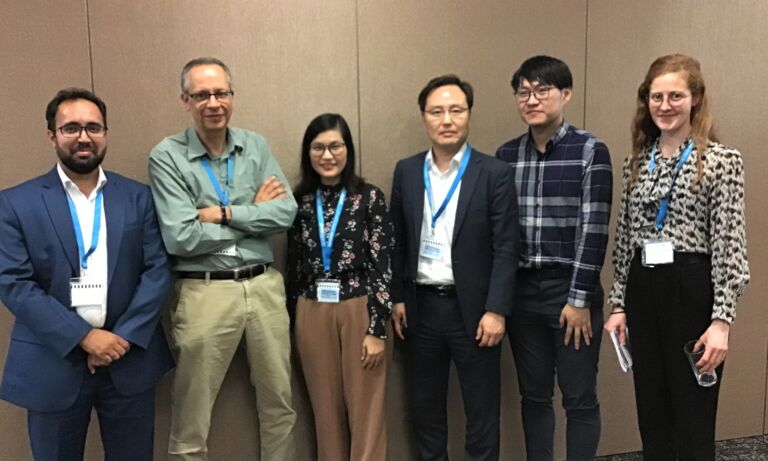
2.1 Membrane fouling and cleaning
Membrane fouling was naturally the focus of many of the presentations, with respect to both its analysis and amelioration:
- Luca Fortunato of KAUST, Saudi Arabia provided moving images of MBR cake build-up using something called Optical Coherence Tomography (OCT), the ultimate dirty video. Luca’s group, led by TorOve Leiknes, managed to correlate observed changes in fouling layer morphology with process performance for a gravity-fed immersed aerobic MBR. The group subsequently found fouling to be most effectively controlled through long relaxation combined with short-term air scouring, appearing to support the principle of the air box-based commercial technologies offered by some providers. View the OCT video on Twitter.
- Quorum quenching – the inactivation of ‘signal’ molecules responsible for promoting foulant production in MBRs by using ‘quenching’ agents – has been the subject of study for some time. In the presentation by Xiaolei Zhang (Shanghai University), on behalf of Kwang-Ho Choo of Kyungpook National University, the authors recognised the presence of the signal molecules in the incoming wastewater. They were then able to demonstrate that fouling, and also clogging, in an aerobic hollow fibre (HF) MBR could be more effectively suppressed by splitting the quenching agent dose between the reactor and an upstream dosing tank – i.e. tackling the signal molecules in the feed as well as in the bioreactor.

- Quorum-sensing genes were also recorded in the biofilm microbial community in the study outlined by Quynh Anh Nguyen, University of Technology Sydney (UTS). This group used amplicon sequencing of the 16S rRNA marker gene to reveal the significant evolution of the microbial community in the mixed liquor during MBR operation. They also observed differences between the communities in the mixed liquor and those in the biofilm, especially under conditions of severe fouling.
- Further work on quorum quenching was presented by Wonjung Song of Konkuk University, based on a biofilm test reactor containing PVDF membrane coupons. These workers demonstrated the efficacy of dosing with the quenching agent on the surface concentration of EPS, which was reduced by a factor of six by dosing with 300 nM of cis-2-Decenoic acid.
- On the anaerobic side, Jeonghwan Kim, Inha University, demonstrated the benefit of the use of a granular media for scouring of a ceramic, immersed flat-sheet membrane to maintain its permeability. This group found a PVDF media to be more effective than granular activated carbon for this duty since the former was more resistant to attrition than GAC granules. A transmembrane pressure (TMP) below 0.05 bar was sustained at the operating flux of 10 LMH using this scouring method.

It was good to see that the topic of membrane cleaning was addressed in a few of the presentations:
- The talk scheduled for presentation by Zhenghua Zhang of Tsinghua University was delivered by Muhammad Bilal Asif, Wollongong University. This work concerned the impacts of iron coagulant species – employed for phosphorus removal – on both fouling and cleaning. Both ferric or ferrous coagulant, dosed at a 2–4 Fe:P ratio, were found to be able to reduce permeate P concentrations to below 0.05 mg/L. Observed irreversible gel layer formation and pore blockage was attributed to amorphous ferric oxyhydroxide particles and gelatinous assemblages containing Fe(III) bound to polysaccharide materials. Interestingly, citric acid was found to be somewhat ineffective at removing iron species from the membrane, unlike ascorbic acid-based cleanants which were extremely effective.
- Steven Cao of Memcor (DuPont) presented his work on membrane autopsy. This work is conducted by the company to establish the most effective chemical cleaning protocol for irreversibly fouled potable water membranes extracted from site. He pointed out that a key part of the autopsy process is establishing whether or not the membranes are actually fouled, rather than damaged or clogged.
2.2 Anaerobic MBRs
Alongside the Inha study, investigations based on other aspects of the AnMBR technology were reported:
- Luong Ngoc Nguyen, University of Technology, Sydney, presented research into a hybrid system based on an AnMBR with a downstream microalgal membrane photo bioreactor (MPBR) for recovering both the latent energy from the organic carbon, using the AnMBR, and the nutrients using the MPBR. The aim of the work is to produce a complete system for sustainable resource recovery from high-strength wastewater. This includes harvesting of the microalgae, already successfully achieved using a cationic polyacrylamide polymer.
Algae harvesting
- The work presented by Perlie Velasco of RMIT University focused on the recovery of dissolved methane downstream on the AnMBR using an HF membrane contactor. In this case the AnMBR comprises a UASB with membrane filtration of supernatant. The work is apparently still in the early stages, but thus far methane removal efficiencies of 76–95% have been attained using a microporous membrane. The generated biogas contains 27–34% methane.
2.3 Process biology and biochemistry enhancement
- Zulqarnain Fida of the University of Wollongong discussed the use of an anoxic sidestream reactor for both enhanced sludge reduction and degradation of emerging trace organic contaminants (TROCs). The study confirmed that sludge generation could be reduced by more than half by installing the anoxic reactor on the return activated sludge line, as well as enhanced TROCs removal (by 40–90%) through adsorption onto the sludge solids.
- A rather more esoteric study of an enzymic membrane reactor by the group at the Technical University of Denmark was presented by Sigyn Björk Sigurdardottir. She and her colleagues intend to explore inorganic membranes with ultra-high surface areas and bespoke surface properties for enzyme immobilisation supporting materials, as well as designing immobilisation methods to promote the catalytic properties and recycling of the enzyme and reuse of the support materials. The project is still in the early stages, but it appears that alumino silicate nanofibres offer some promise.
2.4 Pilot-scale studies
- Kaushalya Wijekoon of DuPont, owners of the Memcor® membrane product portfolio, provided details of energy optimisation of the Mempulse® MBR technology. The authors demonstrated an air scour rate reduction of up to 52% at average fluxes below 25 LMH, compared to a 15% reduction for fluxes above 30 LMH at 10000 mg/L MLSS concentration. Trials at 12500 mg/L MLSS concentration showed up to 55% air scouring reduction for flux less than 25 LMH and 13% reduction for fluxes greater than 30 LMH.

- Stefan Koel provided an update on Pentair’s ‘Helix’ module which has been installed at the Airlift sidestream MBR site at Ootsmarsum. The success of the pilot plant study led to one complete skid being fitted with the new Helix helical flow module. It has since been successfully operating at the same increased energy efficiency as demonstrated by the pilot plant.


2.5 Resource recovery
- Perhaps the ultimate exercise in resource recovery was provided by Sherub Phuntsho and his colleagues at UTS. These workers are attempting to recover the nutrient content from human urine, using a regular aerobic MBR to convert ammonia/urea to nitrate followed by membrane distillation (MD) for nitrate recovery. The MD concentrate has apparently already been successfully used to fertilize lettuce and Pak Choi in a vertical garden.
3. Summary
As is often the case, the conference served both to re-affirm things already known and shed light on a few more enigmatic subjects. And, of course, it provided an opportunity to catch up with colleagues from across the globe, which is always welcome. Indeed, we managed to hold a select gathering of Cranfield University staff past and present on one evening by way of commemorating the occasion.

And if you missed IMSTEC 2020, there’s no shortage of membrane conferences worldwide. ICOM, the International Congress on Membranes and Membrane Processes, is coming up in July 2020 (in London), and the next IMSTEC conference is already scheduled for Melbourne on 4–8 December 2022.
So, if a visit to Melbourne in two years’ time tickles your fancy, then go forth and permeate. Then write an abstract about it.
Footnote
Having made the long trip from the other side of the globe, Claire and I took the opportunity to sample some of the other riches that Western Australia has to offer. Mrs J and myself can enthusiastically confirm that the region has a wealth of diverse attractions, that kangaroos look kinda funny when they’re on the move, and that koalas really are impossibly cute.
Suggestions for contributing to the bushfires fund can be found here:
https://www.rfs.nsw.gov.au/news-and-media/general-news/how-you-can-help




